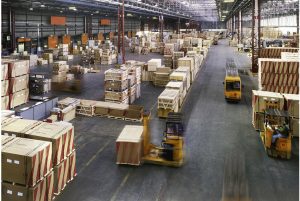 For the importers who source from China, more and more realize that it is essential to arrange quality inspection for the products before they leave China. In most cases, the importers choose a third-party QC company to do pre-shipment quality inspection. In this article, I’d like to tell you the basic procedure of a quality inspection.
For the importers who source from China, more and more realize that it is essential to arrange quality inspection for the products before they leave China. In most cases, the importers choose a third-party QC company to do pre-shipment quality inspection. In this article, I’d like to tell you the basic procedure of a quality inspection.
1) Communication of Requirements
The purchaser describes his products: specifications, dimensions, function, appearance, labeling, packaging… More precise information is provided, the more you can utilize the inspection. If possible, an approved sample can be sent for the inspector’s reference.
2) An inspector goes to the factory
After all products are finished and at least 80% packed, an inspector (or several inspectors if necessary, in most cases, one inspector is enough) goes to the factory.
3) Quantity verification
The cartons are counted, to check if the whole quantity is presented. Then the inspector randomly selects a few cartons, opens them, and checks their content.
4) Random selection of samples
Some samples are taken from each of these cartons, totally randomly. The inspector follows industry-standard statistical rules to ensure his findings are valid.
5) Cosmetic and workmanship check
These samples are checked thoroughly for visual defects. A defect is an imperfection on the product or its packaging. The statistical rules provide a maximum number for each type of defect. If there are too many defects, inspection result is failed.
6) Conformity verification
The inspector also checks if the goods presented by the factory correspond to the purchaser’s requirements. For example, the products might be too small, in the wrong color, incorrectly labeled, or insufficiently protected. If necessary, some tests are performed with the factory’s equipment. Tests vary according to the nature of the products, it’s mandatory for electrical products.
7) Function check
The inspector performs function check based on instruction manual and normal usage situations, to judge if the products conform to what are described on instruction manual, and what are expected for normal usage.
8) Reporting
The inspector issues a report that describes the situation and illustrates it with photos. It documents the findings about presented quantity, visual defects, conformity to requirements, and on-site tests. Also, a PASS / FAIL result will be shown on report.
 Elkexpress
Elkexpress For the importers who source from China, more and more realize that it is essential to arrange
For the importers who source from China, more and more realize that it is essential to arrange 





您好!Please log in